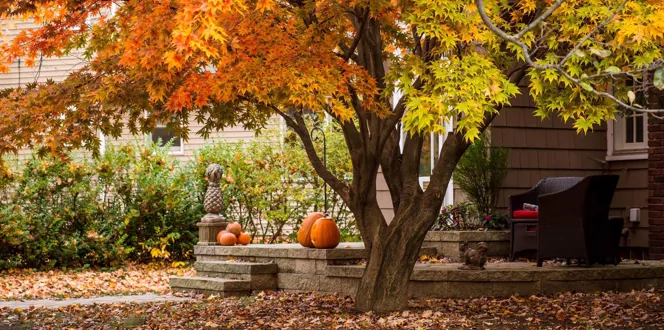A fresh blanket of mulch makes your landscape look polished. Your flowers’ color pops more against a dark background. Even the borders in your garden look sharper.
That covering looks great, but it actually does way more than that! It can reduce weeds, conserve water and add nutrients to the soil as it decomposes. And that’s not even all the benefits!
You know you need to add it. The only question is when!
Read on to find the right time of year for you.
When is the best time to mulch in the Northeast and across the U.S.?
If we had to pick, spring is probably better than fall. But there are merits for both seasons. Run through our checklist below to see which season is right for you.
Is spring the best time for me to mulch?
It is if…
- You care most about reducing annual weeds in your garden. Since of these plants start growing in spring, blocking the sunlight can be a super effective way to make sure they never see the light of day!
- You mostly want a fresh, clean look. The rest is all bonus!
- You’re patient. You should wait until mid-to-late spring. Most people do this too early in the season. That can end up trapping cold moisture and ultimately delaying when plants emerge in spring.
Should I be laying mulch in the fall?
Maybe! Are you…
- Super busy in spring? If your to-do list in the garden is never-ending in spring, make it easy on yourself. Handle this now so that you won’t have to worry about it later!
- Not that concerned with aesthetics? If you mulch now, the color will likely dull and may look a bit lackluster by spring.
- Living in an area with a super cold winter? Insulate your plants with mulch–especially if you added lots of newbies to your garden this year. Just be sure to wait after there have been a few freezes. Around Thanksgiving is a great time.
Before winter, should I refresh or re-mulch?
You should if…
- You have lots of perennials. Have you ever seen these flowers lift out of the ground during or after winter? As the soil freezes and thaws, it expands and contracts, which can push flowers out of their home. A protective laying can lower the chance of that happening by moderating the soil temperature.
- Your yard is filled with evergreens galore. Evergreens often get dry (and then brown) during winter. A covering can help keep the soil moist.
If that’s the case, you can top off what you applied earlier. Remember: there should never be more than two-to-three inches of mulch at once. So, if there’s still an inch left from spring, only add another inch now.





